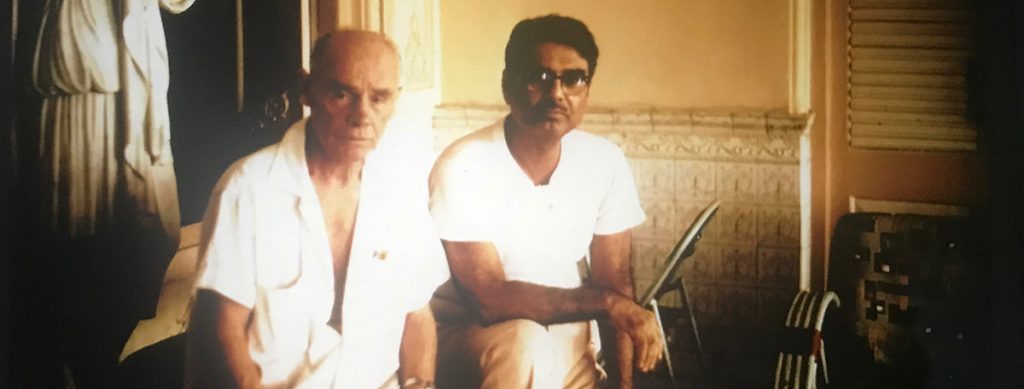The Story of Francis Brabazon
How a shy boy farming an unyielding land near Glenrowan – a place only known for Ned Kelly, Australia’s most notorious bushranger – becomes a disciple-poet of Meher Baba and ends up living with Him for ten years in India is a remarkable story.
In 1912, at the age of five, he emigrated with his family from London following his father’s dream to establish a version of William Morris’s “earthly paradise” in the antipodes. Francis was born a poet and as a boy would weep “at the beauty of night,” and in his late teens would compose verses on the “meaning of life” while ploughing the fields behind a horse drawn plough.
At twenty-one, virtually penniless, he arrived in Melbourne and pursued an education denied him living in the bush. He read endlessly, kept writing poetry, attended concerts, took piano and painting lessons, and mingled with the artists from the Contemporary Art Society, newly formed in 1938. He published some of his early poems in some of the first literary journals of the day, The Angry Penguins and A Comment, and exhibited his paintings in the CAS exhibitions of 1942. Max Harris, the then editor of The Angry Penguins described Francis’s paintings as introducing “the first appreciation of the naïve or primitive symbolism in the Australian art world [and] it influenced the entire Angry Penguins community,” which included painters like Sidney Nolan.
But Francis was as much a spiritual seeker as an artist. He was driven by the question of beauty’s relationship with truth. His quest took him into the world of the Sufi Movement, established in 1910 by Murshid Inayat Khan who introduced Sufism into Western culture. And, more specifically, under the spiritual tutelage of a Sheikh of the Movement presently living in Australia, Baron von Frankenberg, whom Francis referred to as his “first Guru.”
In an early piece, “Art as a Practice of Devotion”, published in his book 7 Stars to Morning Francis’s move into a more spiritual perspective is clearly evident: “Representation does not mean in the likeness of an object, but in the likeness of the creativeness of the Creator.” The Australian poet Les Murray, wrote that this statement was “the best account I’ve heard of why we feel joy in getting something right. It’s the joy of communing prayer.”
Prayer, however, wasn’t enough for Francis. He was more inspired by The Song of Songs: “Let him kiss me with the kisses of his mouth: for thy love is better than wine,” and this drive eventually took him into the presence of Meher Baba whom he saw as the Ideal or Perfect Man and the end of his spiritual quest: “the very personification of Truth and the very embodiment of Beauty.”
“He looked as I had imagined a Sadguru to look – a man who is nothing and everything, a man who is dead and alive, a man who has gone through everything. He is quite small, short and slight. His eyes are the most remarkable thing about Him, very large eyes, and they are constantly moving. In an ordinary person we would call it restlessness, but not Him. He did not convey that at all, but conveyed activity.” ~ Francis Brabazon
Meher Baba accepted Francis as His disciple-poet and he wrote out of this position as a disciple-poet and not simply as a poet documenting his experiences living with a Master. In this regard, his work is unique in Western literature. For Meher Baba, he wrote a book length epic poem, Stay with God, and various volumes of poetry, songs and plays. Of particular interest is his two collections of ghazals modelled upon the fourteenth century Persian Master Hafiz which give a contemporary flavour of the love-cry and longing which marks this poetic genre.
– Ross Keating
Francis Brabazon’s Works
Explore Francis Brabazon’s devotional poetry and music, including ‘Hymn to God the Man‘, ‘The Golden Book of Praise‘ and more here.
Francis Brabazon Copyright
Please be kindly reminded that the rights to use, publish, circulate or reproduce any works of Francis Brabazon must be requested from the copyright holder.
Download the Francis Brabazon Copyright Ownership PDF and Francis Brabazon Intellectual Property Policy PDF.
